Simple Sorry the Transfer Failed Please Try Again
If your site is encountering the "Upload: Failed to Write File to Disk" error, it can exist more than annoying because you're non able to upload new files until you've fixed.
Fortunately, there are a few steps yous tin can take to resolve this WordPress error, so you tin properly upload files to your Media Library again. The potential solutions are every bit simple as adjusting a few settings via File Transfer Protocol (FTP) and making a call to your hosting provider.
In this article, nosotros'll explain why y'all may be seeing the "Upload: Failed to Write File to Disk" fault on your WordPress site. Then we'll walk yous through three potential solutions to go your workflow dorsum on track.
Let's get to it!
Why You're Seeing the "Upload: Failed to Write File to Disk" fault in WordPress
Most of the time, the Upload: Failed to Write File to Disk Error is due to a trouble with your site's file permissions. As a security measure out, WordPress only enables certain users to change its files, including the binder that stores uploads.
If the permissions for this folder are set to prevent users from modifying or 'writing to' it, so your upload attempts will fail. You tin speedily determine if this is the issue by using the Site Health tool.
Navigate to Tools > Site Health in your dashboard, and click on the Info tab. The concluding dropdown menu will show you the file permissions for a handful of folders, including the uploads directory:
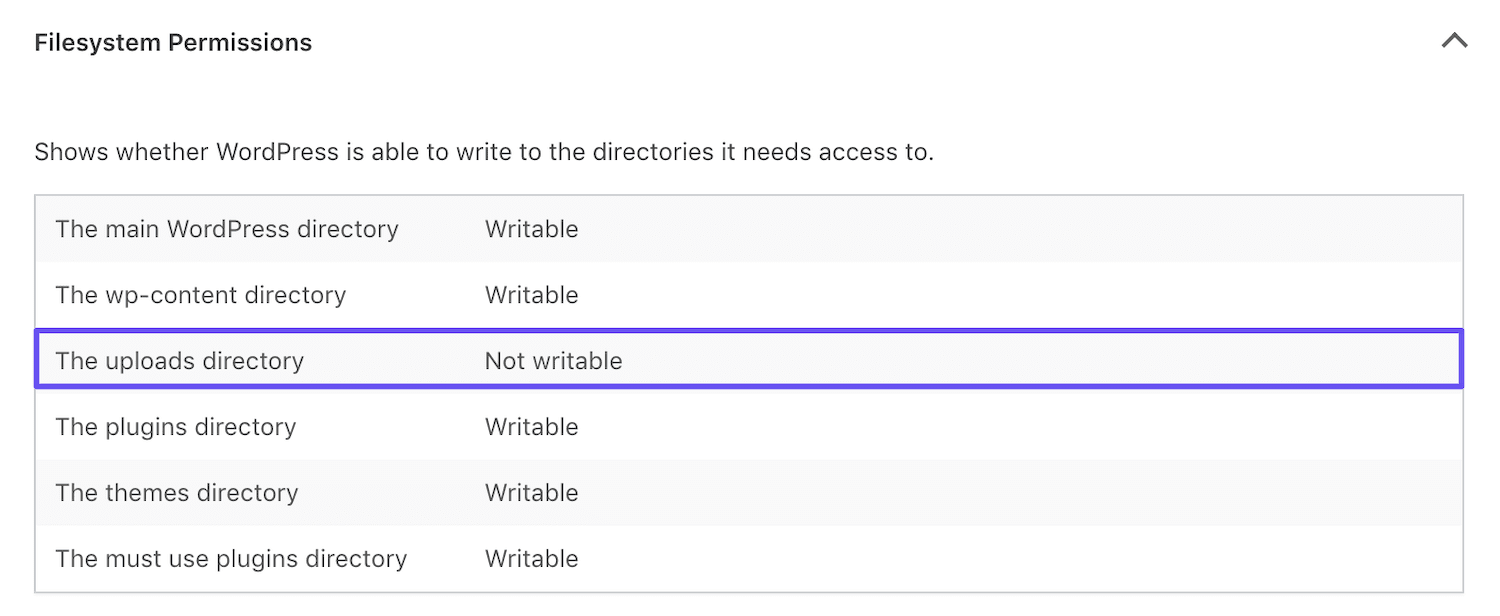
The directory should be set up to Writable. If it'due south set to Not writable, then you know y'all're dealing with a permissions upshot.
At that place are a few other, less common reasons for this problem. When y'all add together a new media file, WordPress stores information technology in a temporary folder before moving it to the uploads directory. If the temporary binder is full or unavailable, you may see the Upload: Failed to Write File to Disk error.
Additionally, if you lot've used all the disk space on your server that was allotted to yous by your hosting plan, you may see this error. In this case, it's your server's style of telling you there's no more room for boosted files.
How to Fix the Upload: Failed to Write File to Deejay Error in WordPress (3 Potential Solutions)
Fixing the Upload: Failed to Write File to Disk error is fairly simple. Here are 3 solutions for tackling this issue, based on the root crusade.
1. Alter the File Permissions of Your Uploads Directory
If you lot've used the Site Health tool to determine that your Upload: Failed to Write File to Disk error is due to incorrect permissions, you'll demand to use File Transfer Protocol (FTP) to fix it. If you're unfamiliar with this process, we have a full guide on how to get started.
Y'all'll need an FTP client such every bit FileZilla installed on your computer (if you want to prove hidden files hither is the trick). You'll besides require your FTP credentials, which you should exist able to observe in your hosting account dashboard.
Kinsta customers can find theirs directly in MyKinsta, by navigating to Sites, clicking on the relevant domain, and looking under SFTP/SSH in the Info tab:
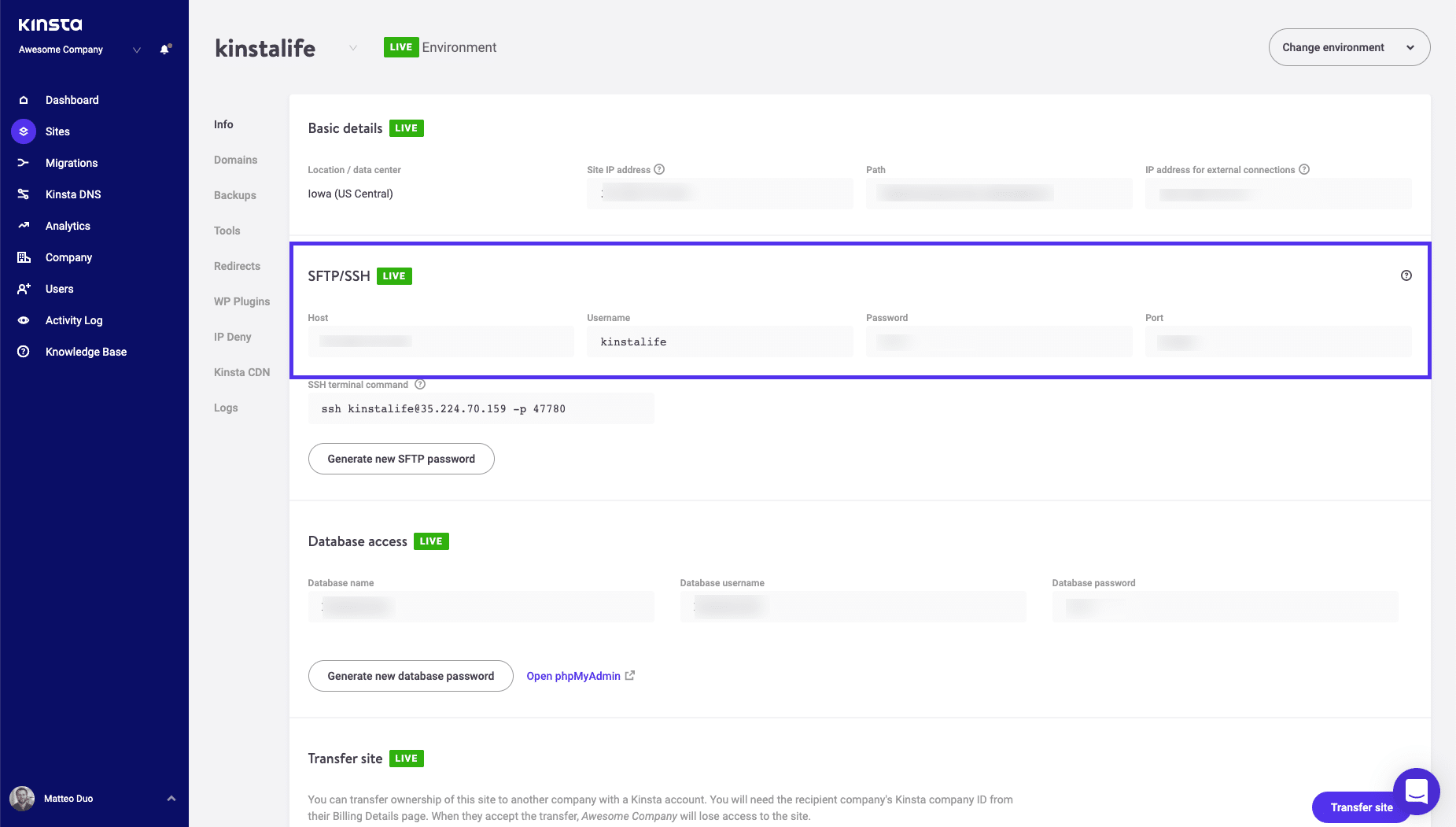
Enter your credentials in your FTP customer and launch your connection to the server. Then navigate to your uploads directory in public_html > wp-content:
Subscribe Now
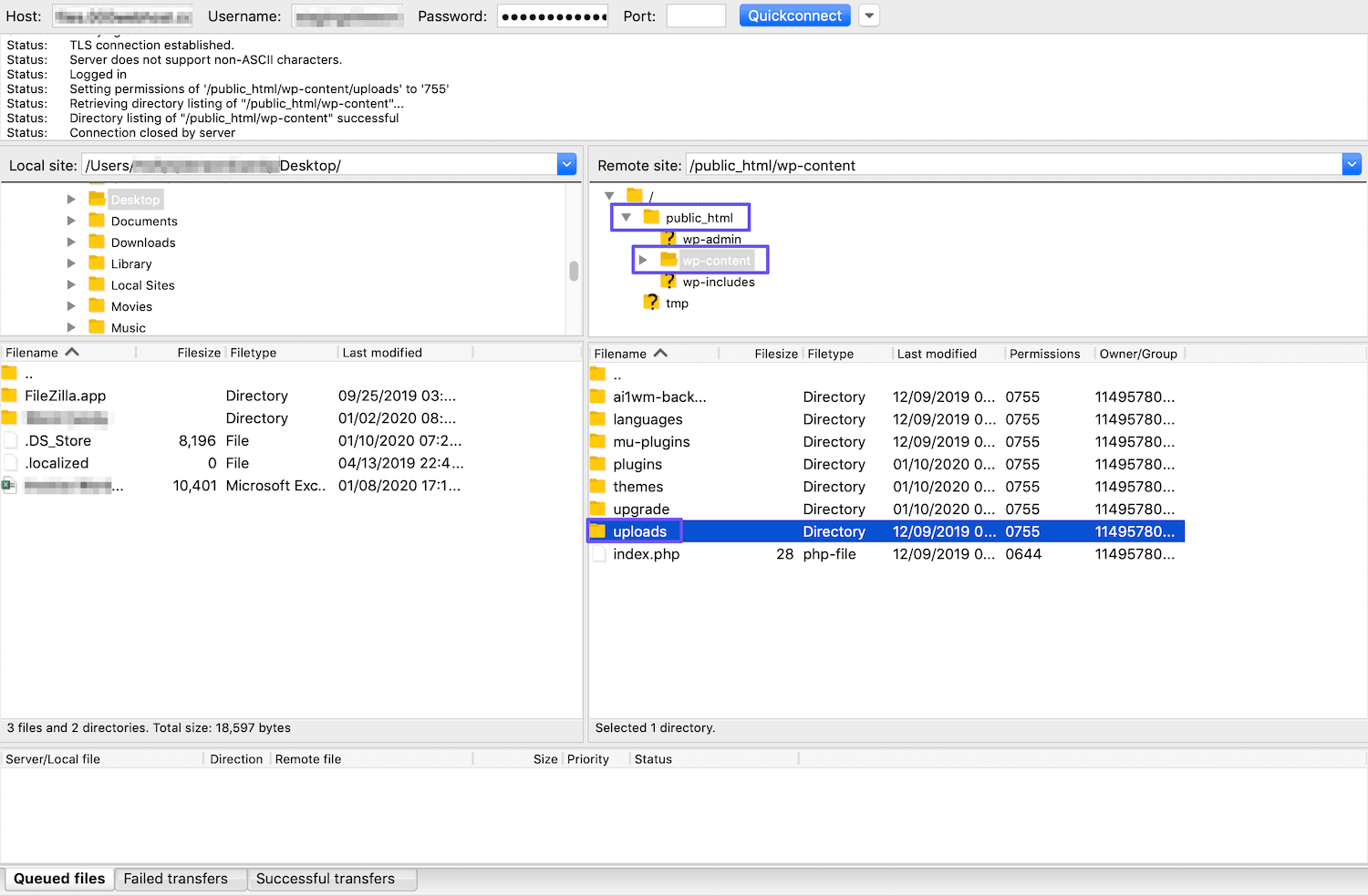
Correct-click on the folder, and so select File Permissions:
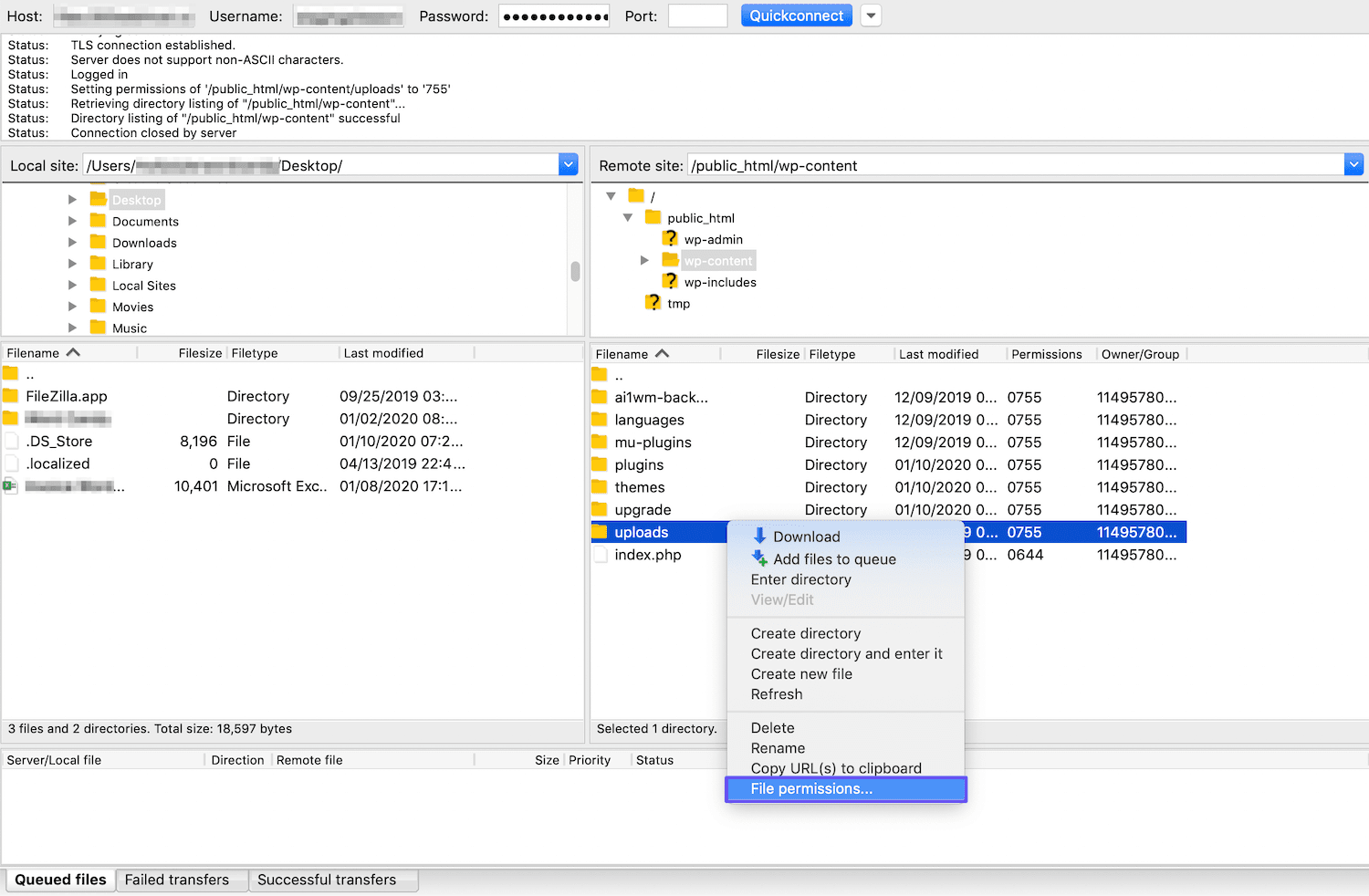
A numeric system is used to determine the permissions settings for your site's files. Your uploads directory should be set to 755:
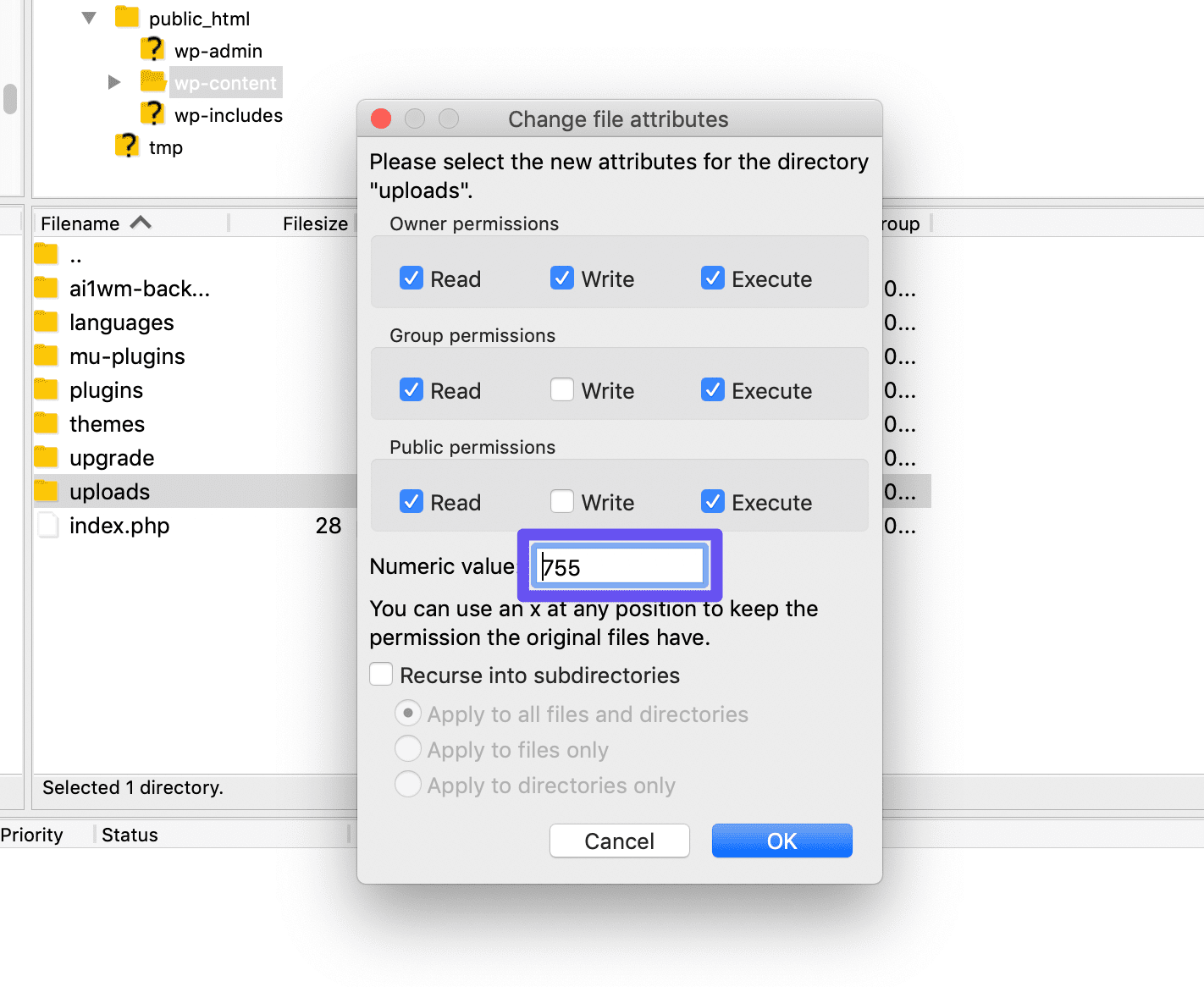
Click on the OK button to salve your new permissions settings. Then return to your WordPress site.
If you cheque the Site Wellness tool again, your uploads folder should now be listed as Writable:
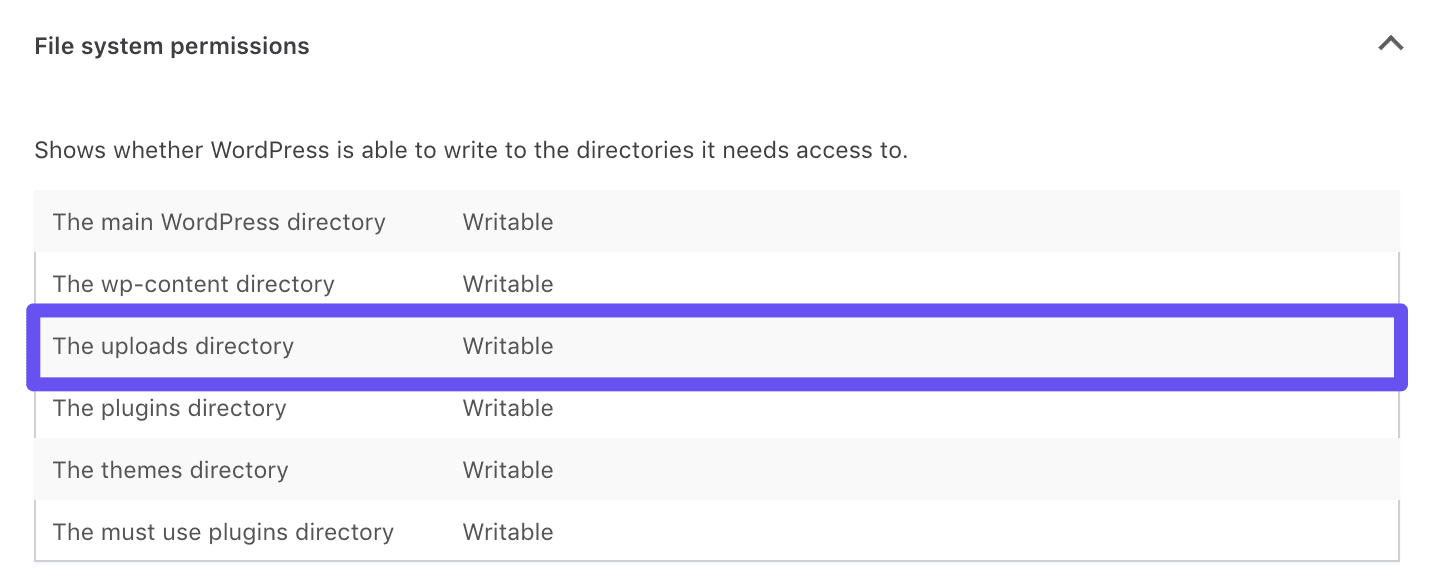
At this indicate, y'all should be able to upload files to your WordPress site without issue.
2. Empty the WordPress Temporary Folder
If file permissions aren't your problem, you may want to try emptying the temporary folder WordPress uses to upload files to your site. Unfortunately, yous can't access this directory via FTP.
Instead, y'all'll need to contact your hosting provider to help y'all with this chore. The back up team should be able to access this subconscious file on your server and determine if it's total or otherwise causing the Upload: Failed to Write File to Disk error.
3. Upgrade Your Hosting Programme to Access More Deejay Infinite
Information technology's also possible that you've used up all the disk space provided by your hosting program (here's how to cheque disk usage in WordPress). This is particularly probable if your site is on a shared server and has grown over time through the improver of posts and pages, plugins, themes, and so on.
Most hosting accounts will list how much disk space you're currently using. Kinsta customers can discover this data in their MyKinsta dashboard, under Resource usage:

Fortunately, the solution to this problem is very uncomplicated. If yous're maxing out your site'due south current allocation of disk space, all you demand to do is upgrade to a new hosting plan. Your provider should offer articulate documentation on how to switch over to a new package.
Summary
Resolving the Upload: Failed to Write File to Disk fault in WordPress quickly is key to making sure this issue doesn't slow down your business concern. To fix this error, here are the iii most common potential solutions:
- Check the file permissions of your uploads directory.
- Empty the WordPress temporary binder.
- Upgrade your hosting program to access more than disk infinite.
Relieve time, costs and maximize site performance with:
- Instant help from WordPress hosting experts, 24/7.
- Cloudflare Enterprise integration.
- Global audition attain with 29 data centers worldwide.
- Optimization with our built-in Application Functioning Monitoring.
All of that and much more than, in one plan with no long-term contracts, assisted migrations, and a xxx-day-money-dorsum-guarantee. Check out our plans or talk to sales to find the program that'south correct for you lot.
Source: https://kinsta.com/knowledgebase/wordpress-failed-to-write-file-to-disk/
0 Response to "Simple Sorry the Transfer Failed Please Try Again"
Postar um comentário